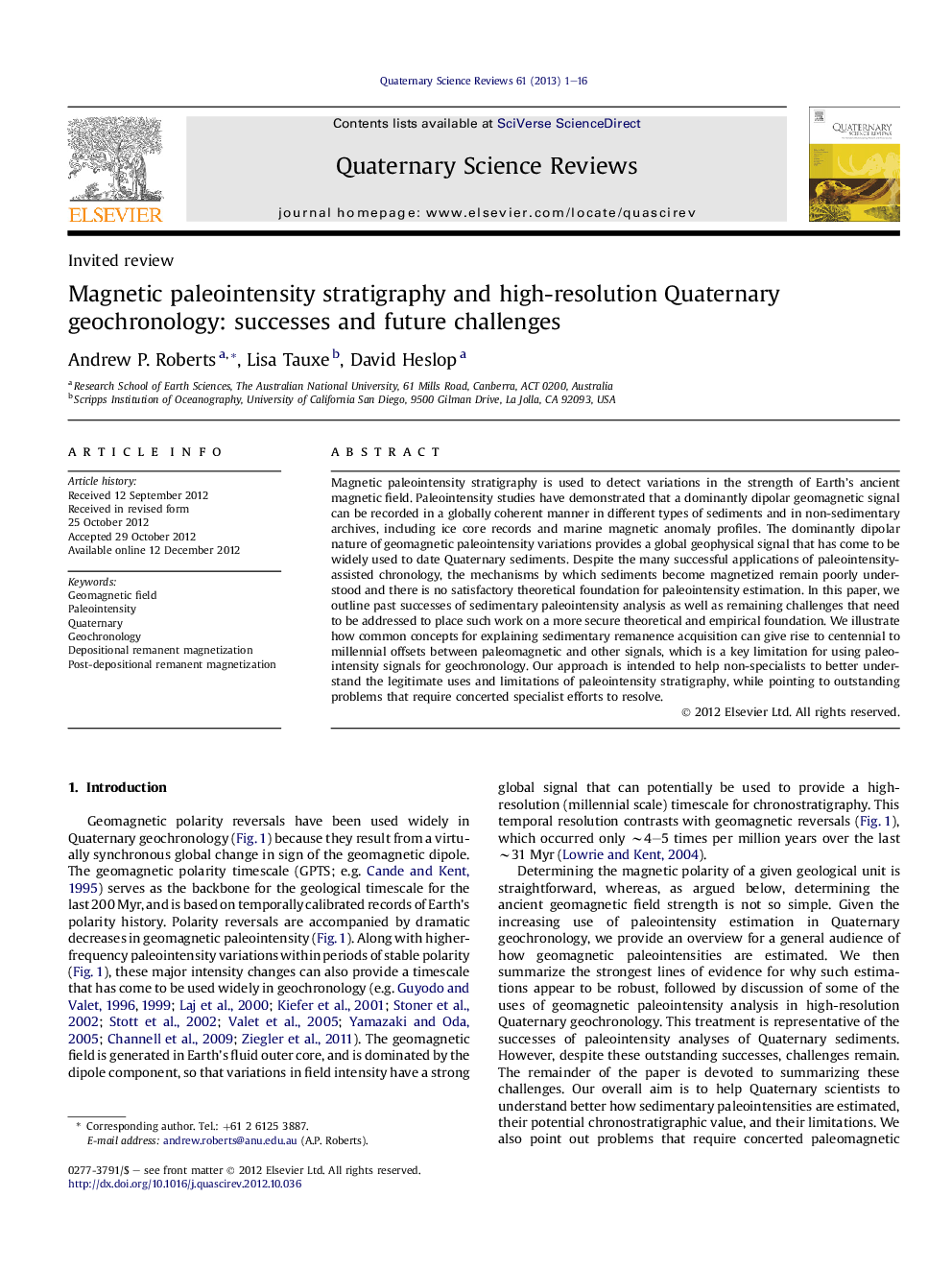| کد مقاله | کد نشریه | سال انتشار | مقاله انگلیسی | نسخه تمام متن |
|---|---|---|---|---|
| 6445763 | 1640873 | 2013 | 16 صفحه PDF | دانلود رایگان |
عنوان انگلیسی مقاله ISI
Magnetic paleointensity stratigraphy and high-resolution Quaternary geochronology: successes and future challenges
ترجمه فارسی عنوان
چینه شناسی پائولواینتسیتمایی مغناطیسی و ژئوچنولوژی کواترنر با وضوح بالا: موفقیت و چالش های آینده
دانلود مقاله + سفارش ترجمه
دانلود مقاله ISI انگلیسی
رایگان برای ایرانیان
کلمات کلیدی
موضوعات مرتبط
مهندسی و علوم پایه
علوم زمین و سیارات
زمین شناسی
چکیده انگلیسی
Magnetic paleointensity stratigraphy is used to detect variations in the strength of Earth's ancient magnetic field. Paleointensity studies have demonstrated that a dominantly dipolar geomagnetic signal can be recorded in a globally coherent manner in different types of sediments and in non-sedimentary archives, including ice core records and marine magnetic anomaly profiles. The dominantly dipolar nature of geomagnetic paleointensity variations provides a global geophysical signal that has come to be widely used to date Quaternary sediments. Despite the many successful applications of paleointensity-assisted chronology, the mechanisms by which sediments become magnetized remain poorly understood and there is no satisfactory theoretical foundation for paleointensity estimation. In this paper, we outline past successes of sedimentary paleointensity analysis as well as remaining challenges that need to be addressed to place such work on a more secure theoretical and empirical foundation. We illustrate how common concepts for explaining sedimentary remanence acquisition can give rise to centennial to millennial offsets between paleomagnetic and other signals, which is a key limitation for using paleointensity signals for geochronology. Our approach is intended to help non-specialists to better understand the legitimate uses and limitations of paleointensity stratigraphy, while pointing to outstanding problems that require concerted specialist efforts to resolve.
ناشر
Database: Elsevier - ScienceDirect (ساینس دایرکت)
Journal: Quaternary Science Reviews - Volume 61, 1 February 2013, Pages 1-16
Journal: Quaternary Science Reviews - Volume 61, 1 February 2013, Pages 1-16
نویسندگان
Andrew P. Roberts, Lisa Tauxe, David Heslop,
